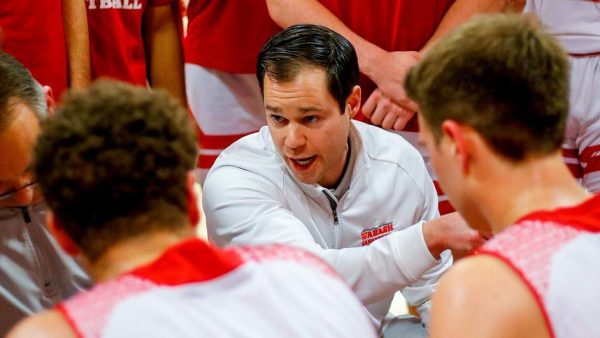Baylor wins first national title as March Madness concludes
The NCAA men’s and women’s basketball tournaments concluded on April 5, as the Baylor University Bears beat the Gonzaga Bulldogs, winning their first-ever national title and putting a bow on March Madness.
The women’s tournament ended the day prior as the Stanford Cardinal outlasted the Arizona Wildcats in a tight 54-53 victory, securing the third national championship for the Cardinal women’s team.
This year’s March Madness was the first in two years, as the NCAA basketball season was cut short in 2020 during the first rounds of conference tournaments across the country. Not only was there no tournament, but no teams were even selected or seeded for the tournament due to the concerns regarding COVID-19.
“Especially because we didn’t get it last year and my team, Texas, was supposed to be good this year, I was definitely looking forward to it,” Noah Moore, ’21 said.
While the tournament was able to be played this year, multiple challenges were faced by conferences across the country in order to get the season off the ground to begin with. Division one and two schools were able to play a full, yet modified, regular season as well as having a tournament, however division three schools were limited in their competition this season.
The first two days of the tournament provided viewers with a healthy dose of madness, as 10 upsets took place in the first round alone. Three major standouts from that group of underdogs were 15 seed Oral Roberts, 14 seed Abilene Christian and 11 seed UCLA, who ended up having success in the tournament, playing in the final four after making the tournament in a play-in game against Michigan State.
“We had an 11 seed in the final four, so I always like to root for the upsets when my team loses,” Moore said. “So yeah, (the tournament) definitely lived up to my expectations.”
For the first time in seven years, NCAA basketball fans were able to witness a 15 seed and virtually unknown Oral Roberts team take on and knock off number two seed Ohio State, a heavy favorite heading into the tournament. The first round also included an Oregon Ducks win due to a COVID-19 case among their opponents team, leading to the first NCAA tournament game being decided without being played.
The tournament’s round of 32 carried a similar energy as the first round with six more upsets, forcing one seed Illinois, two seed Iowa and three seeds in Kansas and West Virginia to exit early from the tournament. This high level of play from lower seeded teams was quickly picked up on by viewers and broadcasters alike as the sentiment that this tournament was one of the best in the history of the NCAA was echoed as the games went on.
“March Madness this year more than lived up to my expectations,” Ella Lengauer, ’23 said. “It was exciting because there were a lot of upsets, but they also wrecked my bracket.”
Beyond just the upsets, the later rounds of the tournament provided their own share of excitement, and by the sweet 16, each remaining game in the tournament was tight, high-powered and competitive from each team. One team that did not play very close games until the final four was unbeaten Gonzaga, who had won over 20 games by over 20 points during their 2021 campaign.
Gonzaga’s first close game of the entire season was their final four match-up against UCLA that went into overtime after a close back-and-forth game. With their season on the line in the national semi finals, tied at 80 in OT, Gonzaga guard Jalen Suggs made a half-court shot that sent the Bulldogs to the national championship, a shot that has since been regarded as one of the best shots in March Madness by a multitude of different announcers and analysts.
On the other side of the bracket, Baylor routed their competition with their closest game being a nine-point win over Arkansas in the Elite Eight. Unlike Gonzaga, Baylor came into the tournament with two losses earlier in their regular season, yet they refused to lose in March, concluding the tournament as high-powered and efficient as ever with a 16-point national championship victory.
“The tournament was definitely one of the best that I’ve watched,” Wolfgang Schultz, ’24, said. “I think there was a lot of excitement and a lot of big upsets, a lot of upsets that just weren’t expected.”
As the dust settled on the March tournament, 19 upsets took place throughout the entire bracket and UCLA became just the fourth team in history to make the final four as an 11 seed. The nation became infatuated, once again, with Sister Jean from Loyola Chicago, and 12 seed Oregon State, who finished the regular season in sixth for their conference, won their conference tournament and continued their hot streak all the way until the Elite Eight.







